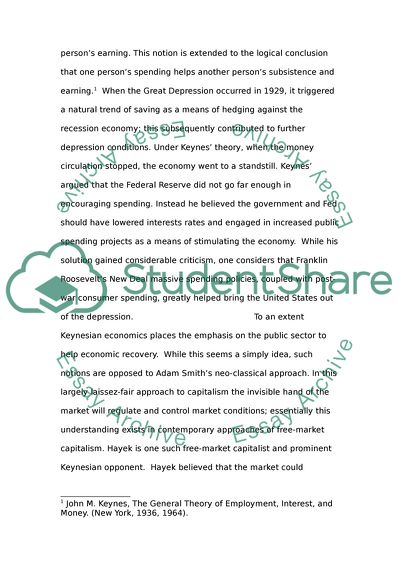Cite this document
(Keyness General Theory - a Theory of Capitalist Production or Description of the Circumstances of the Great Depression Case Study Example | Topics and Well Written Essays - 3000 words, n.d.)
Keyness General Theory - a Theory of Capitalist Production or Description of the Circumstances of the Great Depression Case Study Example | Topics and Well Written Essays - 3000 words. https://studentshare.org/macro-microeconomics/1762013-was-keyness-general-theory-actually-a-general-theory-of-capitalist-production-or-merely-a-description-of-the-circumstances-surrounding-the-great-depression
Keyness General Theory - a Theory of Capitalist Production or Description of the Circumstances of the Great Depression Case Study Example | Topics and Well Written Essays - 3000 words. https://studentshare.org/macro-microeconomics/1762013-was-keyness-general-theory-actually-a-general-theory-of-capitalist-production-or-merely-a-description-of-the-circumstances-surrounding-the-great-depression
(Keyness General Theory - a Theory of Capitalist Production or Description of the Circumstances of the Great Depression Case Study Example | Topics and Well Written Essays - 3000 Words)
Keyness General Theory - a Theory of Capitalist Production or Description of the Circumstances of the Great Depression Case Study Example | Topics and Well Written Essays - 3000 Words. https://studentshare.org/macro-microeconomics/1762013-was-keyness-general-theory-actually-a-general-theory-of-capitalist-production-or-merely-a-description-of-the-circumstances-surrounding-the-great-depression.
Keyness General Theory - a Theory of Capitalist Production or Description of the Circumstances of the Great Depression Case Study Example | Topics and Well Written Essays - 3000 Words. https://studentshare.org/macro-microeconomics/1762013-was-keyness-general-theory-actually-a-general-theory-of-capitalist-production-or-merely-a-description-of-the-circumstances-surrounding-the-great-depression.
“Keyness General Theory - a Theory of Capitalist Production or Description of the Circumstances of the Great Depression Case Study Example | Topics and Well Written Essays - 3000 Words”. https://studentshare.org/macro-microeconomics/1762013-was-keyness-general-theory-actually-a-general-theory-of-capitalist-production-or-merely-a-description-of-the-circumstances-surrounding-the-great-depression.


